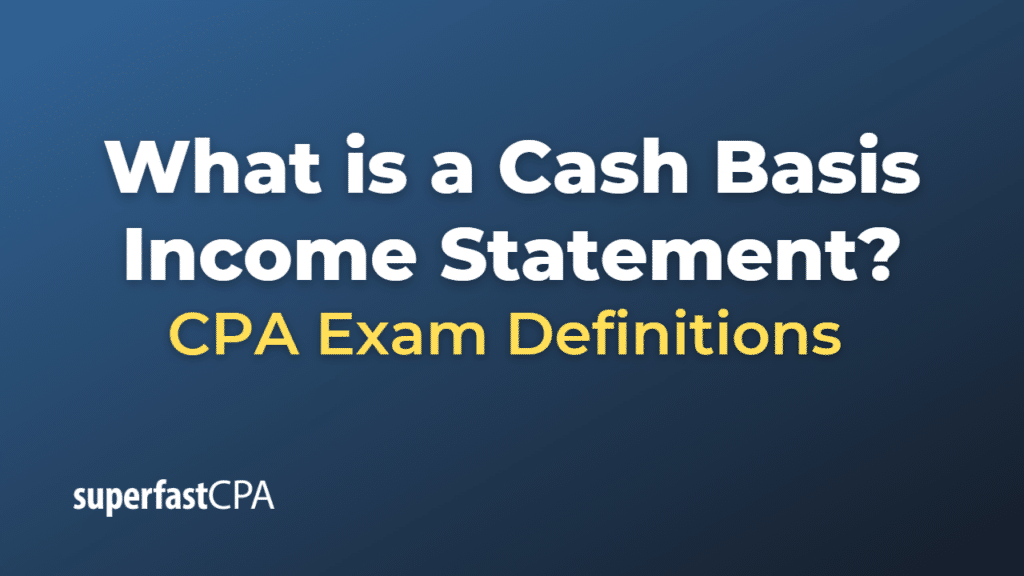Cash Basis Income Statement
A cash basis income statement is a financial statement that presents a company’s revenues and expenses over a specific period using the cash basis of accounting. The cash basis of accounting recognizes revenues when cash is received and expenses when cash is paid out. This method of accounting is generally simpler than the accrual basis, which recognizes revenues and expenses when they are earned or incurred, regardless of when cash is exchanged.
The cash basis income statement consists of the following components:
- Revenues: Cash received from the sale of goods or services during the reporting period. This includes only the cash collected from customers and not the amounts earned but not yet received (accounts receivable).
- Expenses: Cash paid for operating costs, such as rent, utilities, wages, and supplies, during the reporting period. This includes only the cash paid to suppliers and employees and not the amounts incurred but not yet paid (accounts payable).
- Net Income: The difference between revenues and expenses, which represents the company’s profit or loss during the reporting period.
A cash basis income statement is typically used by small businesses, sole proprietorships, or individuals who prefer a simpler method of tracking their financial performance. However, the cash basis income statement may not provide a comprehensive view of a company’s financial health, as it does not account for the timing differences in revenue and expense recognition. Larger businesses and those required to follow Generally Accepted Accounting Principles (GAAP) or International Financial Reporting Standards (IFRS) typically use the accrual basis of accounting and prepare an accrual basis income statement.
Example of a Cash Basis Income Statement
Let’s consider a small consulting business, “Expert Solutions,” to illustrate a cash basis income statement. During a one-year reporting period, Expert Solutions has the following cash inflows and outflows:
- Revenues: $80,000 (cash received from clients for consulting services)
- Expenses: a. Rent: $12,000 (cash paid for office space) b. Utilities: $3,000 (cash paid for electricity, water, and internet) c. Wages: $50,000 (cash paid to employees) d. Office supplies: $2,000 (cash paid for stationery, printer ink, etc.)
To create a cash basis income statement for Expert Solutions, you would list the revenues and expenses and calculate the net income as follows:
Revenues:
- Consulting services: $80,000 Total Revenues: $80,000
Expenses:
- Rent: $12,000
- Utilities: $3,000
- Wages: $50,000
- Office supplies: $2,000 Total Expenses: $67,000
Net Income: Net Income = Total Revenues – Total Expenses Net Income = $80,000 – $67,000 Net Income = $13,000
In this example, the cash basis income statement only includes the cash transactions for Expert Solutions. It shows a net income of $13,000 for the reporting period. However, this method does not account for any outstanding invoices (accounts receivable) or unpaid bills (accounts payable) that could impact the company’s financial performance. For a more comprehensive view of the company’s financial health, an accrual basis income statement would be more appropriate, particularly for larger businesses or those required to follow GAAP or IFRS.













